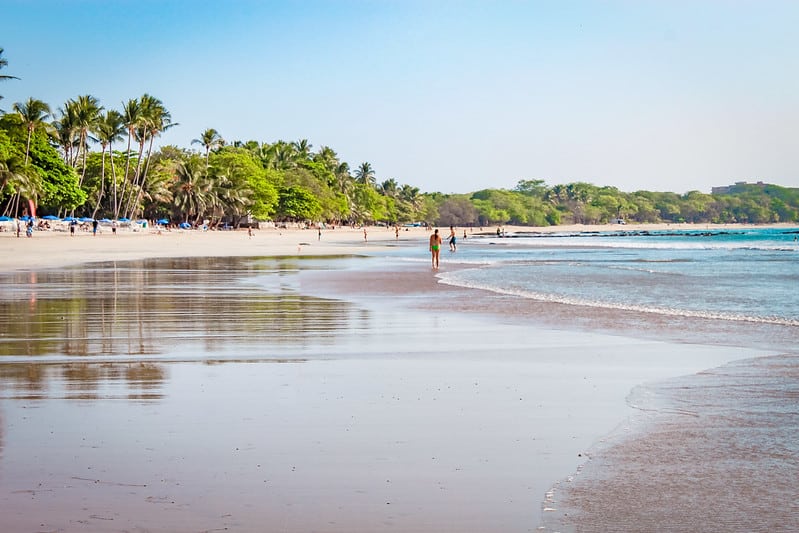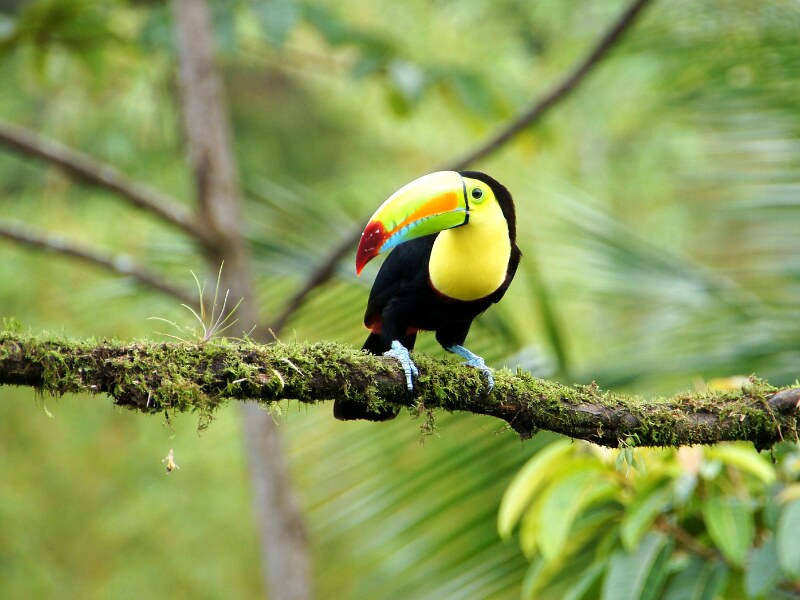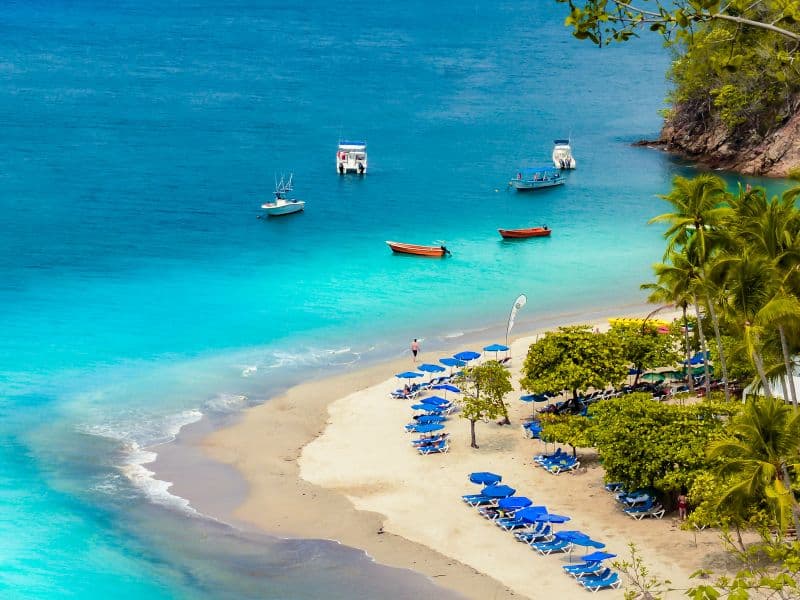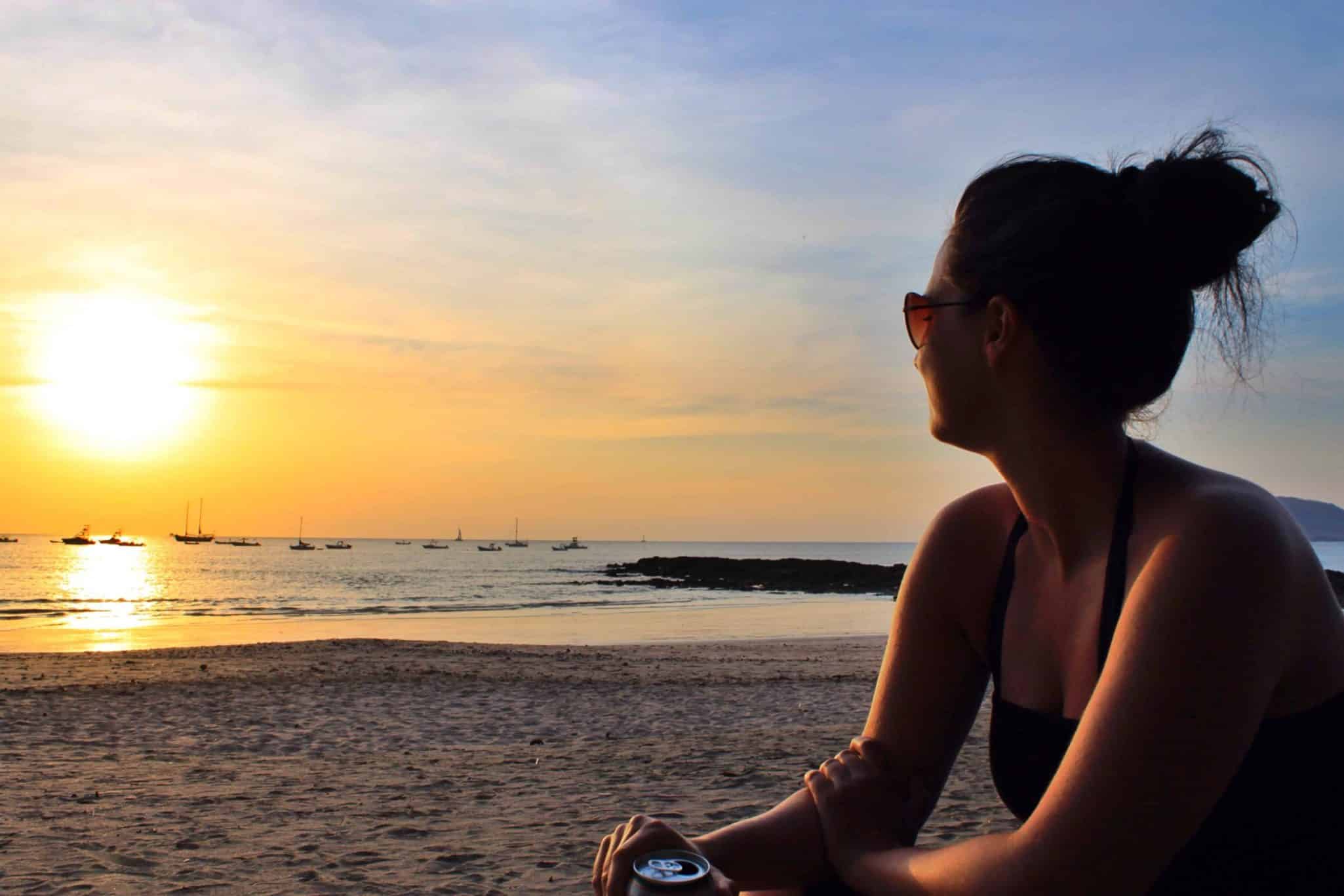What is the national bird of Costa Rica (and why?)
Costa Rica is home to over 900 bird species. So, which one is the national bird of Costa Rica?
It’s a bird that’s not just common but also has a special meaning for locals.
Let’s find out what bird it is and why Costa Ricans chose it to represent their country.
This post contains referral links for products I love. Adventurous Miriam earns a small commission at no extra cost to you if you purchase through my links. I appreciate your support ♡ Learn more
Why is the Clay-Colored Thrush the national bird of Costa Rica?
You might wonder why the unassuming Clay-Colored Thrush, or Yigüirro as it’s known locally, holds the prestigious title of Costa Rica’s national bird.
Why choose this particular bird?
It wasn’t for flashy feathers or rarity. Instead, it’s the thrush’s familiar song, heralding the rainy season, that captured the hearts of Costa Ricans.
Its recognition speaks to the cultural significance of its song, partly because it’s a sound that rings in the green season, which is vital to the agricultural lifeblood of the country.
If you’re in Costa Rica during the start of the rainy season, you’ll hear the thrush’s melodic call, a reminder of nature’s cycles and rhythms that the people of Costa Rica hold dear.
Read next: 10 best places for bird watching in Costa Rica
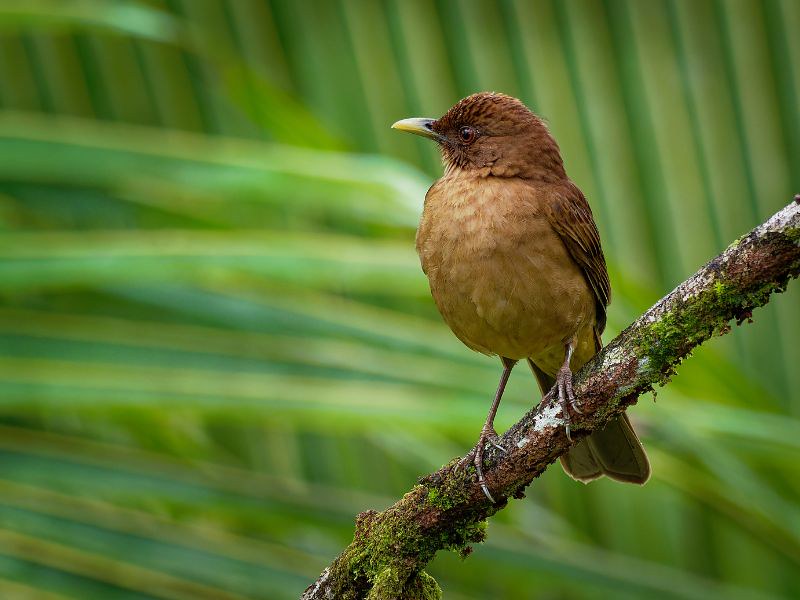
When did the Clay-Colored Thrush (Yigüirro) become the national bird of Costa Rica?
The Clay-Colored Thrush became the national bird of Costa Rica in January 1977 when President Daniel Oduber Quirós made it official.
Read next: 10 best bird watching tours in Costa Rica
A little bit about the National Bird of Costa Rica
The national bird of Costa Rica is the Clay-Colored Thrush, a bird renowned for its distinct song. Let’s dive into the key aspects of this feathered inhabitant of Costa Rica.
What does the Clay-Colored Thrush look like?
Clay-Colored Thrushes, as their name suggests, have clay-colored plumage that blends perfectly with the earthy tones of their habitat.
Adults typically showcase a uniform light brown color with a tinge of olive, slightly paler on the belly. They are medium-sized birds with a rounded head and straight bill.

Where does the Clay-Colored Thrush live?
These birds are adaptable creatures, residing in a range of environments.
You can find them from urban areas to dense forests across Costa Rica. The species has a notable presence practically all over the country.
What does the Clay-Colored Thrush eat?
Their diet mainly includes:
- Fruits
- Small insects
This allows them to thrive in a variety of settings, from gardens to agricultural areas where such food sources are abundant.
Read next: 12 best places to see wildlife in Costa Rica
How does the Clay-Colored Thrush breed?
The breeding season for Clay-Colored Thrushes usually falls between March and July.
They are known for their cup-shaped nests, often found in trees or shrubs.
These birds are somewhat solitary when nesting, fiercely defending their territory.

What sounds do Clay-Colored Thrush make?
Clay-Colored Thrushes are quite the vocalists.
They possess an impressive range, capable of mimicking other birds and even mechanical noises.
Their calls are often heard during the rainy season, contributing to Costa Rica’s vibrant soundscape.
Listen to the song of the clay colored thrush here:
Are Clay-Colored Thrush endangered?
Currently, the Clay-Colored Thrush is not considered endangered.
It benefits from a wide distribution in Costa Rica and a versatility that allows it to adjust to different habitats and changing conditions.
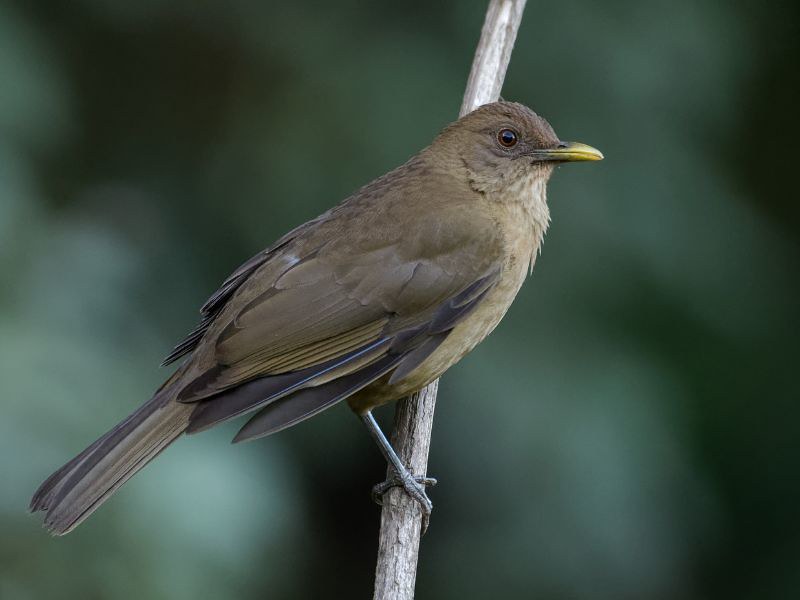
Costa Rica National Bird FAQs
What is the National Animal of Costa Rica?
The national animal and bird of Costa Rica is the clay-colored thrush, known locally as yigüirro. It became the national bird in 1977, symbolizing the start of the rainy season with its song.
What is the average lifespan of a Clay-Colored Thrush?
A clay-colored thrush typically lives around 11 years in the wild. Their survival hinges on avoiding predators and disease.
What is the big colorful bird in Costa Rica?
The big colorful bird in Costa Rica is likely the Scarlet Macaw, known for its bright red, yellow, and blue feathers.
What is the most common bird in Costa Rica?
The Clay-colored Thrush, known locally as “Yigüirro,” is the most common bird in Costa Rica. It’s recognized for its brownish-gray plumage and sweet songs, and it’s so beloved that it’s been designated as the national bird of the country.
What kind of bird is on the Costa Rica flag?
There is no bird depicted on the Costa Rica flag. The flag consists of five horizontal stripes, with blue on the top and bottom, followed by white, and then a red stripe in the center. It does not feature any imagery of birds or animals.
What is the rarest bird in Costa Rica and what does it represent?
The rarest bird in Costa Rica is often considered to be the Resplendent Quetzal.
It represents freedom and is highly revered, as it is known to die in captivity and thus symbolizes independence and liberty.
The quetzal is also a symbol of the Monteverde Cloud Forest, where it predominantly lives.
What are some fun facts about Costa Rica birds?
- Costa Rica is home to the resplendent quetzal, one of the most striking birds found in the country.
- Despite its fame, the clay-colored thrush prefers to stay low-key in forests, gardens, and urban areas.
- Birds like the scarlet macaw and the keel-billed toucan are part of the diverse aviary population thriving in Costa Rica’s rich ecosystems.
More wildlife posts you might like
- 10 best places for bird watching in Costa Rica
- Sloths in Costa Rica and where to find them
- 12 best places to see wildlife in Costa Rica
- 10 amazing rainforest animals in Central America
Save it!


